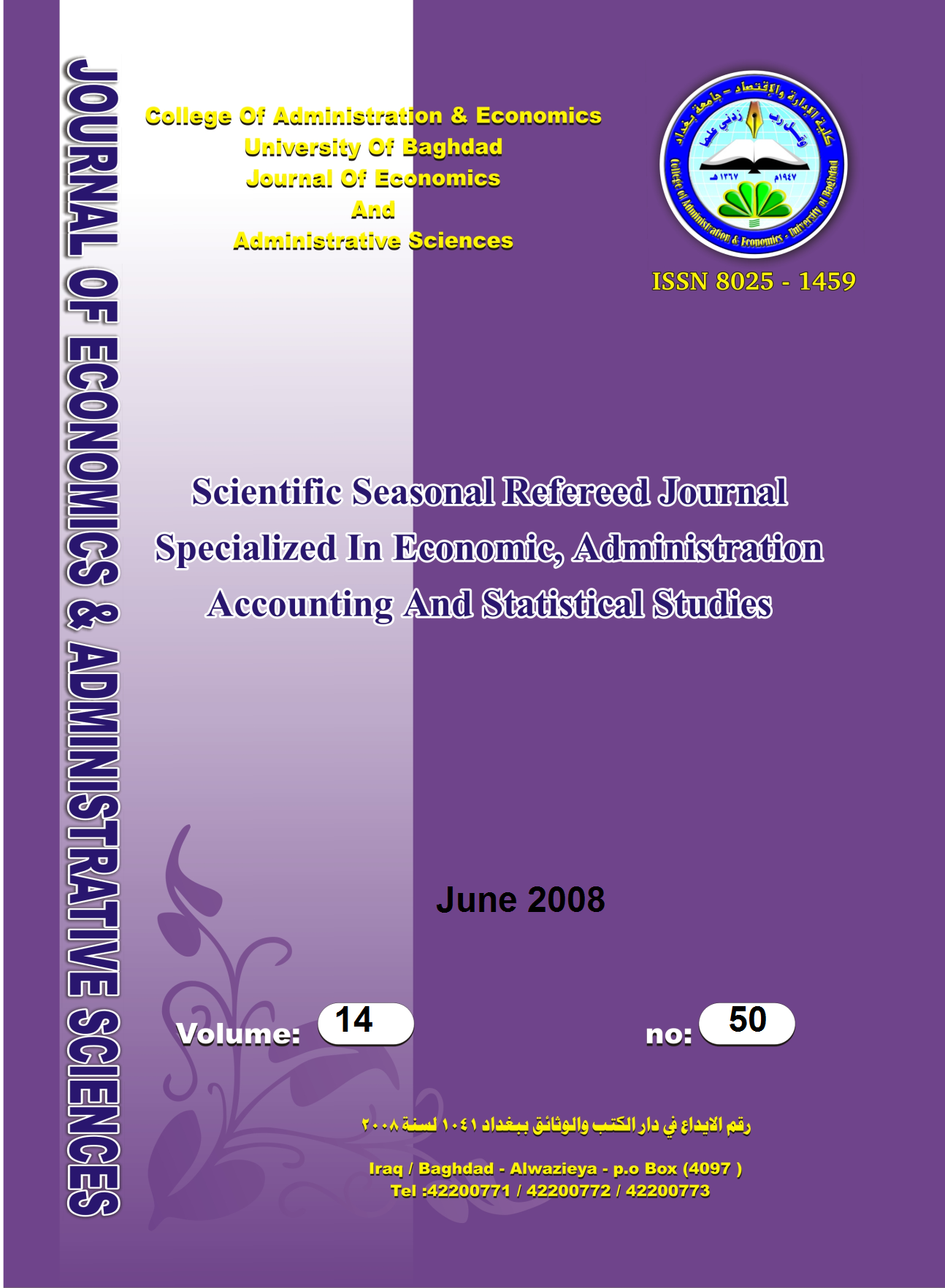تحليل – الكلفة – الحجم – الربح – في ظل نظام الكلفة على أساس الأنشطة
DOI:
https://doi.org/10.33095/jeas.v14i50.1398Keywords:
تحليل – الكلفة – الحجم – الربح – في ظل نظام الكلفة على أساس الأنشطةAbstract
Recent advancement in production technologist of manufacturing processes have left an important effects upon cost structure. Moreover the problem for providing necessary and adequate information for managerial decision making.
Therefore the cost – volume – profit analysis under the new activity based costing has replace the old method for Analysing the relation between C.V.P with respect to profit planning and control.
In brief the C.V.P object is to discuss the effect of changes on profit resulting from changes in sales volume, cost of manufacturing and selling price.
This study consists of four chapters:
The first chapter dealt with method of analysing costs – volume and profit according to the traditional approach.
The second chapter dealt with the C.V.P analysis under the new approach activity based costing.
The third chapter dealt with studying the company research sample and the practical application of the C.V.P analysis under the traditional and the new approach, using the actual information from the books and other sources of data obtained from the Electrical industries company.
Finally, the forth chapter summarized the major conclusions and presented some recommendations that related to the research area.
Downloads
Published
Issue
Section
License

This work is licensed under a Creative Commons Attribution-NonCommercial-NoDerivatives 4.0 International License.
Articles submitted to the journal should not have been published before in their current or substantially similar form or be under consideration for publication with another journal. Please see JEAS originality guidelines for details. Use this in conjunction with the points below about references, before submission i.e. always attribute clearly using either indented text or quote marks as well as making use of the preferred Harvard style of formatting. Authors submitting articles for publication warrant that the work is not an infringement of any existing copyright and will indemnify the publisher against any breach of such warranty. For ease of dissemination and to ensure proper policing of use, papers and contributions become the legal copyright of the publisher unless otherwise agreed.
The editor may make use of Turtitin software for checking the originality of submissions received.


























